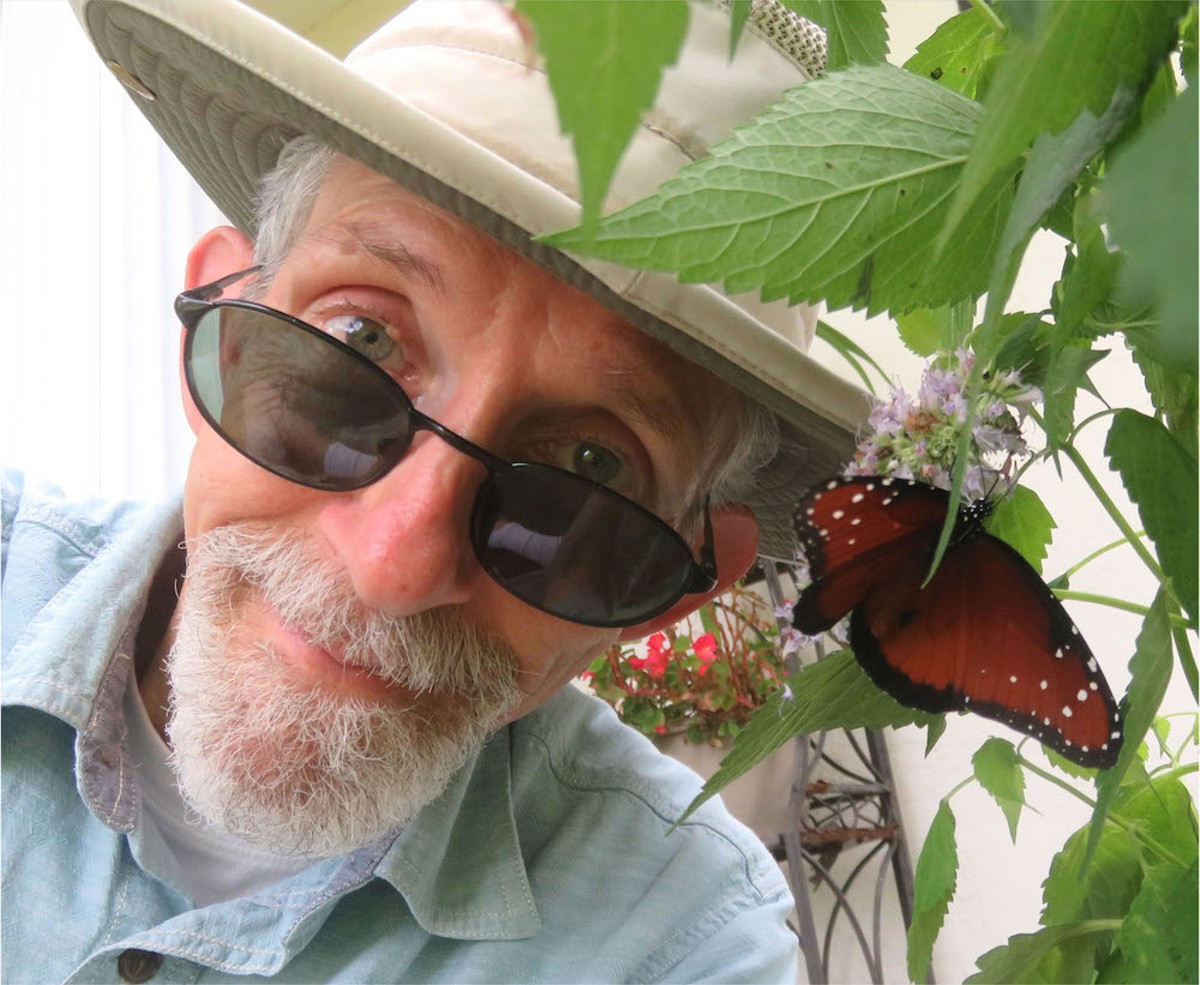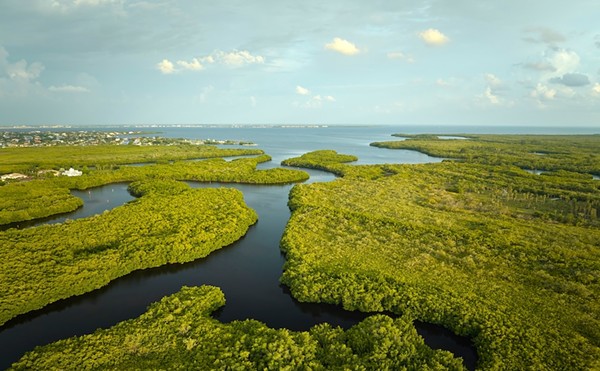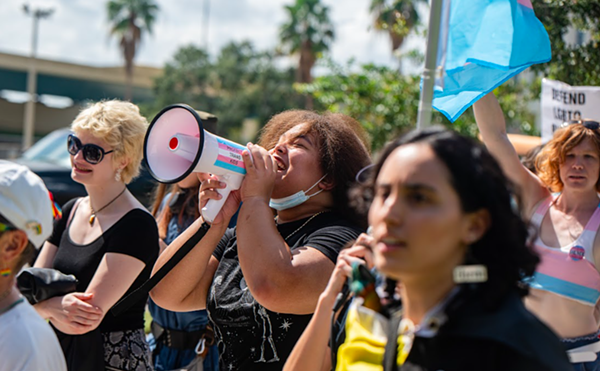Like so many Florida residents, Taylor Jones embraced year-round gardening when he moved from the Northeast to a prominent corner lot in Mount Dora a little over three years ago.
And like more gardeners throughout the world, Jones wanted to help struggling populations of bees and butterflies by planting flowers they use for food and breeding.
So he planted tropical milkweed. Plenty of monarch butterflies showed up. But then Jones learned a disturbing fact. Planting tropical milkweed in Florida, where it's not native, might actually be harming the local population of monarchs. That's because, according to researchers at University of Florida and University of Georgia, monarchs that would normally fly to winter breeding grounds in Mexico end up staying in Florida.
That is really cool if you just want to see butterflies in your yard all year. But entomologists say Florida's population of butterflies – particularly in Northern and Central Florida – is vulnerable to cold snaps if they spend the winter here.
Even worse, research shows they are also more likely to carry a disease-causing parasite called OE (Ophryocystis elektroscirrha) that causes birth defects in emerging butterflies, like crumpled wings and dwarfism.
"You do feel awful when you see a crumpled butterfly that you know is sick," says Jones, who is a syndicated editorial cartoonist. "You have to be careful about how you try to address the natural world. Things get complicated."
Jones now plans to follow advice that has been making the rounds in bug research for a few years: Cut the tropical milkweed down to the ground sometime in October so monarchs don't settle in for the winter.
It's part of a growing awareness that simply planting the most popular milkweed variety – tropical or Mexican milkweed – may not be the best strategy to help the monarch. While they love it, too much tropical milkweed in the U.S. could represent loving the monarch to death.
MIGRATION MYSTERIES
Science is just starting to understand nuances of the monarch's breeding and migration habits, led by researchers like University of Georgia ecologist and associate dean Sonia Altizer. Altizer is credited with first noting that the monarch's famous 3,000-mile journey to winter locations in Central Mexico appears to help the pretty bugs outrun the OE sickness.
Basically, infected butterflies can't handle the journey. So the monarchs that make it that far are assured of reproducing with a healthy mate. You might compare it to humans who would only date people who recently did an Ironman competition.
But planting a lot of tropical milkweed in Florida is like having too many donut shops along the road to the Ironman, tempting competitors to cancel their race and pig out, thus missing their potential athletic mating partner.
"We think that migration weeds out the most heavily infected monarchs, removing them from the populations," Altizer told National Geographic in a 2017 article about her research. She has found that adult butterflies infected with the protozoan OE parasite can't fly as well in lab tests and travel shorter distances in the wild. Research is ongoing.
The prevalence of monarchs in Central Mexico breeding sites for 2017-2018 showed a 14.8 percent decline compared with the previous year, according to surveys by the World Wildlife Federation in Mexico. That's part of a trend that's seen a 90 percent drop over 20 years. Hurricanes, including Harvey and Irma, likely disrupted southern migration last year, the WWF said.
PUBLIC AWARENESS
In April, the Nature Conservancy, along with Full Sail University and Ink Dwell Studio, launched the Monarch Initiative in Central Florida to spotlight the fact that and other butterflies and pollinators such as bees need favorable habitat to thrive.
The Conservancy's main goal is to promote the preservation of natural spaces, and the website for the Monarch Initiative includes a call to plant milkweed. But the Initiative hadn't directly addressed the issue of native milkweed being preferable to the tropical variety until very recently. As more research is becoming available, they're updating their information and programs.
They've also handed out native milkweed seeds at public events, says Fran Perchick, communication and media manager for the Conservancy in Florida. At themonarch initiative.org, you can find a list of native milkweed varieties, and there are plenty – Florida has 21 species of native or swamp milkweed.
Jaret Daniels, associate professor of lepidoptera research and insect conservation at University of Florida, says casual gardeners are confused.
"We hear from the public that they don't know where to find native milkweed, and we hear from nurseries that they don't believe there's a market for it. So it's a chicken-and-egg thing," Daniels says.
He's glad that more people are interested in planting for pollinators. He still tells people they can grow tropical milkweed, but he says they should cut it back in the fall.
"If the monarchs are here all winter, they are continuously breeding here in Florida and the parasite can build up in small populations and reach outbreak levels, versus remaining at lower levels," Daniels says.
Some scientists believe the monarch has had a year-round population in South Florida for years, but with a higher incidence of OE. The prevalence of tropical milkweed has grown in recent years with larger plant distribution networks at big box retailers.
The City of Orlando's Leu Gardens has been telling gardeners how to attract bees and butterflies for years, says director Robert Bowden.
"The whole term 'pollinator garden' is fairly new, but we've had butterfly gardens and plantings that attract pollinators for years. Low numbers of honeybees have drawn more attention over the years, but bees appear to be doing fairly well again," Bowden says.
He's waiting for more published science about tropical milkweed in Florida before he rips out the plant at Leu, but for now, he and the staff there are cutting it back in fall.



















